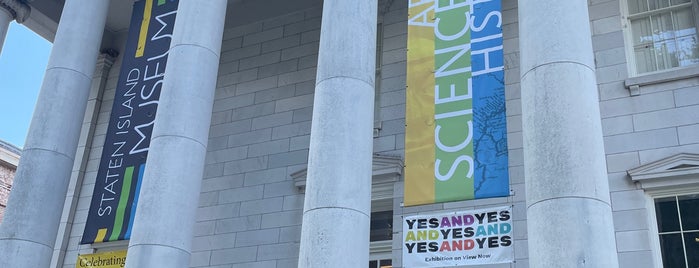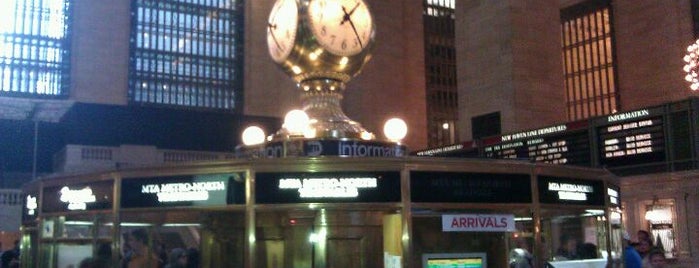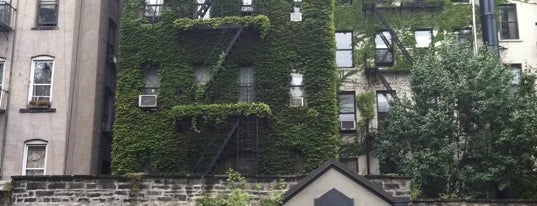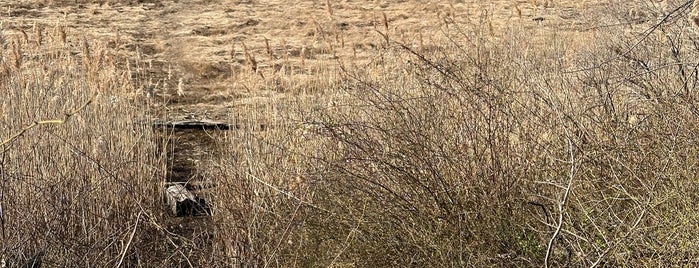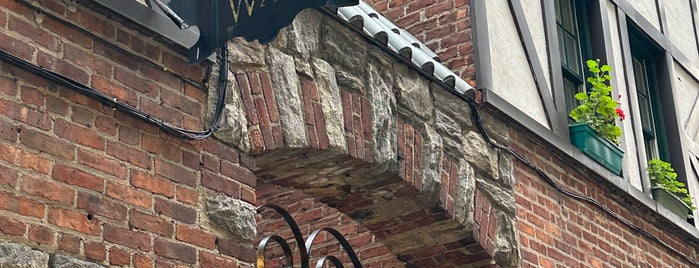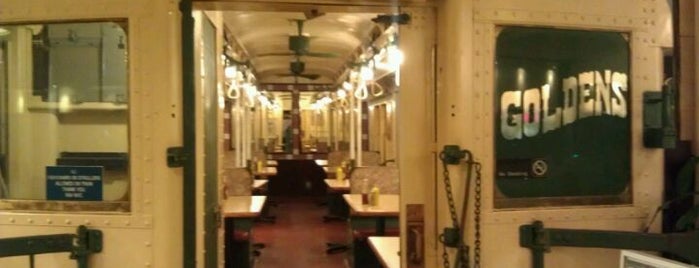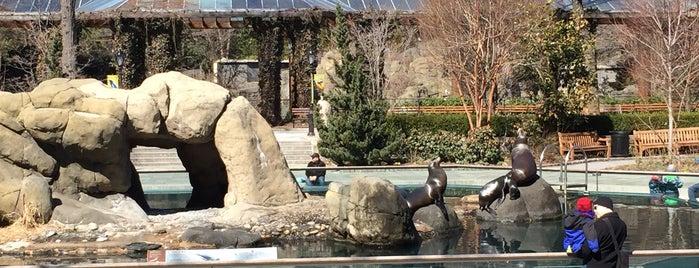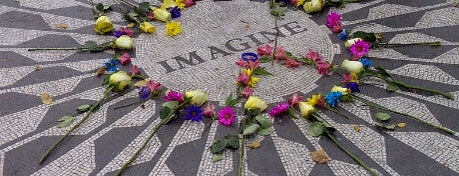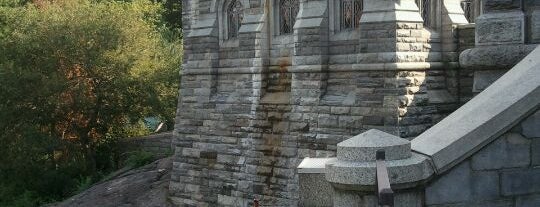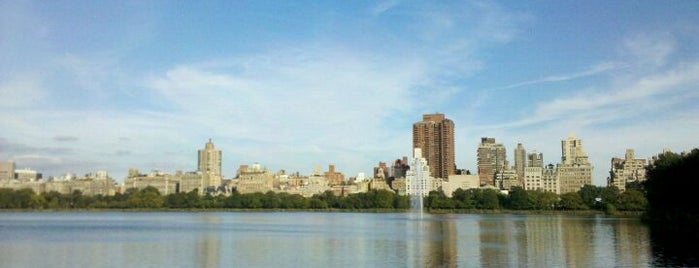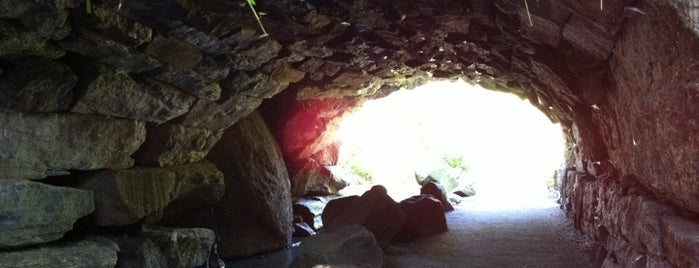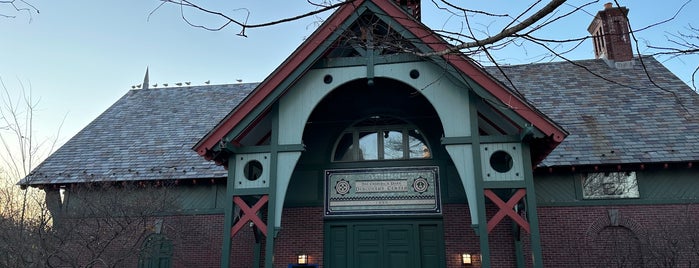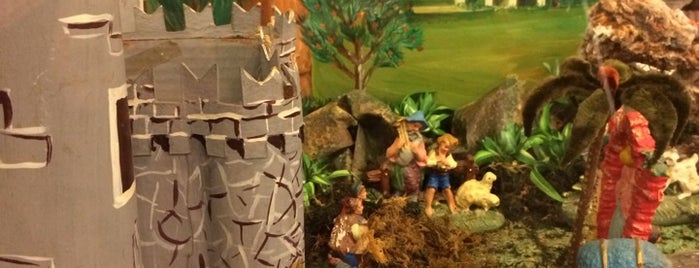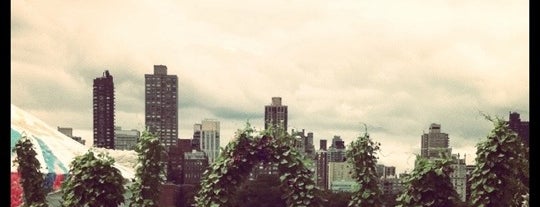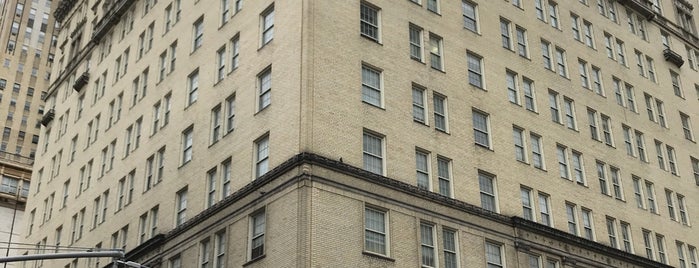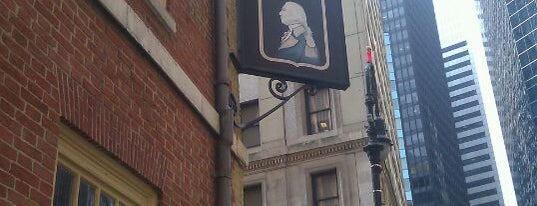![]() Nestled in a small Midtown plaza is an unexpected piece of history: five sections of the Berlin Wall have been on display here since 1990. Read more.
Nestled in a small Midtown plaza is an unexpected piece of history: five sections of the Berlin Wall have been on display here since 1990. Read more.
![]() Ring a nondescript buzzer and ascend far above the SoHo streets to a quiet, meditative room filled entirely with dirt. Here, 3,600 square feet of floor space is covered with 280,000 pounds of earth. Read more.
Ring a nondescript buzzer and ascend far above the SoHo streets to a quiet, meditative room filled entirely with dirt. Here, 3,600 square feet of floor space is covered with 280,000 pounds of earth. Read more.
![]() On Fridays through October 8, you can borrow a bike for up to an hour for free as part of Bike and Roll's Free Bike Fridays. Read more.
On Fridays through October 8, you can borrow a bike for up to an hour for free as part of Bike and Roll's Free Bike Fridays. Read more.
![]() Special features here include the Hall of Natural Science's Cabinet of Curiosities, home to bizarre wonders of nature (such as a four-legged chicken preserved in a jar and glow-in-the-dark rocks). Read more.
Special features here include the Hall of Natural Science's Cabinet of Curiosities, home to bizarre wonders of nature (such as a four-legged chicken preserved in a jar and glow-in-the-dark rocks). Read more.
![]() The cemetery gate, located at the end of a narrow alley leading from Second Avenue, is unlocked to visitors only for a few hours on the 4th Sunday of each month from April to October. Read more.
The cemetery gate, located at the end of a narrow alley leading from Second Avenue, is unlocked to visitors only for a few hours on the 4th Sunday of each month from April to October. Read more.
![]() This swampy patch of the Arthur Kill Road waterway is the final resting place for dozens of abandoned boats. The gravesite can be found via a makeshift path off Arthur Kill Road near Rossville Avenue. Read more.
This swampy patch of the Arthur Kill Road waterway is the final resting place for dozens of abandoned boats. The gravesite can be found via a makeshift path off Arthur Kill Road near Rossville Avenue. Read more.
![]() 27 buildings resembling Tudor homes with colorful doors, shutters and timber frames grace this gated street that's tucked away on the Upper West Side, nearly completely out of view to passersby. Read more.
27 buildings resembling Tudor homes with colorful doors, shutters and timber frames grace this gated street that's tucked away on the Upper West Side, nearly completely out of view to passersby. Read more.
![]() Originally bought as a backyard playground for his kids, Ray Pannone's 1936 subway car was instead placed in his diner. The only restaurant with a real NYC subway car as part of its decor. Read more.
Originally bought as a backyard playground for his kids, Ray Pannone's 1936 subway car was instead placed in his diner. The only restaurant with a real NYC subway car as part of its decor. Read more.
![]() So called because it's lined with statues of writers William Shakespeare, Robert Burns, Sir Walter Scott and Fitz-Greene Halleck—and Christopher Columbus, often referred to here as "the odd man out." Read more.
So called because it's lined with statues of writers William Shakespeare, Robert Burns, Sir Walter Scott and Fitz-Greene Halleck—and Christopher Columbus, often referred to here as "the odd man out." Read more.
![]() Designed by Calvert Vaux in the 1860s as a lookout point for the Great Lawn to the north and the Ramble to the south. Now home to the Henry Luce Nature Observatory. Read more.
Designed by Calvert Vaux in the 1860s as a lookout point for the Great Lawn to the north and the Ramble to the south. Now home to the Henry Luce Nature Observatory. Read more.
![]() Originally built as a backup to the NYC's main water supply, the reservoir now serves as an ecological sanctuary that houses more than 20 species, including herons, egrets, loons, coots, wood ducks. Read more.
Originally built as a backup to the NYC's main water supply, the reservoir now serves as an ecological sanctuary that houses more than 20 species, including herons, egrets, loons, coots, wood ducks. Read more.
![]() Built from enormous uncut boulders—one of which is said to weigh 100 tons—Central Park's Huddlestone Arch is supported not by mortar, concrete or metal but by gravity and friction alone. Read more.
Built from enormous uncut boulders—one of which is said to weigh 100 tons—Central Park's Huddlestone Arch is supported not by mortar, concrete or metal but by gravity and friction alone. Read more.
![]() There is catch-and-release fishing Tuesday through Sunday from April to October of each year. Read more.
There is catch-and-release fishing Tuesday through Sunday from April to October of each year. Read more.
![]() Fittingly, the branch of the NYPL in The Bronx's Little Italy features Italian-language newspapers, books, videos and other materials that chronicle and illuminate the Italian-American experience. Read more.
Fittingly, the branch of the NYPL in The Bronx's Little Italy features Italian-language newspapers, books, videos and other materials that chronicle and illuminate the Italian-American experience. Read more.
![]() This sprawling park boasts the nation's first public golf course, which opened in 1895. It offers rolling hills, well-placed water and trees and a 600-yard-plus hole that will challenge anyone. Read more.
This sprawling park boasts the nation's first public golf course, which opened in 1895. It offers rolling hills, well-placed water and trees and a 600-yard-plus hole that will challenge anyone. Read more.
![]() Once an abandoned landfill, in the 1980s this area was turned into an open studio and exhibition space for artists, as well as a neighborhood park. Read more.
Once an abandoned landfill, in the 1980s this area was turned into an open studio and exhibition space for artists, as well as a neighborhood park. Read more.
![]() No longer a hotel, in its heyday in the early 20th century, it was the largest one in NYC. It boasted the largest indoor saltwater swimming pool in the country, replete with a spring-fed waterfall. Read more.
No longer a hotel, in its heyday in the early 20th century, it was the largest one in NYC. It boasted the largest indoor saltwater swimming pool in the country, replete with a spring-fed waterfall. Read more.
![]() The site of George Washington's farewell to his officers in 1783 is Manhattan's oldest surviving structure. Fraunces Tavern is New York's only museum dedicated to American Revolutionary War history. Read more.
The site of George Washington's farewell to his officers in 1783 is Manhattan's oldest surviving structure. Fraunces Tavern is New York's only museum dedicated to American Revolutionary War history. Read more.



